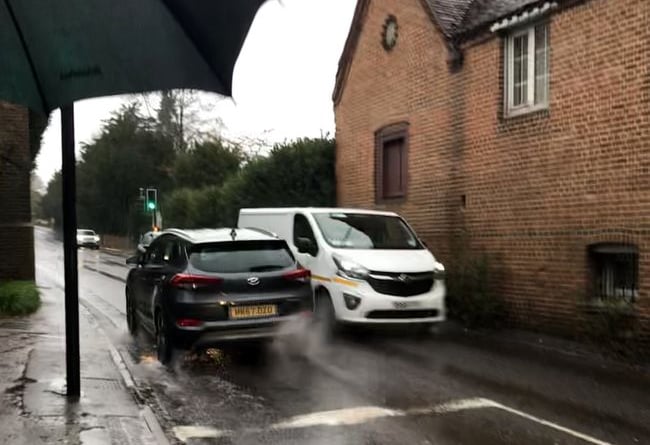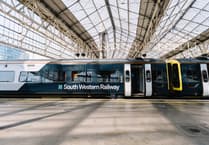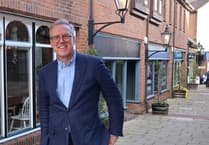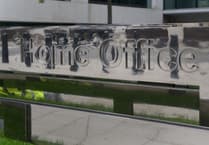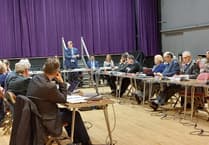The Farnham Infrastructure Programme (FIP) has two town-centre proposals showing different ways to address our outdated and congested road layout:
Proposal A: Castle Street and Downing Street
The FIP team has noted this option will not change the road capacity as it formalises the layout introduced during the Covid-19 pandemic.
Proposal B: Changing traffic flow and widening pavements
However, the programme team has advised there will be displacement of traffic to outer neighbourhoods and villages, as travelling through the town centre for through traffic will become a less-attractive option as it will take longer than other routes.
The traffic modelling note advises traffic flows are predicted to increase because of this displacement. The roads impacted including the Upper Hale Road, Alma Lane and the A325 between Upper Hale Road and the Shepherd and Flock roundabout, Upper Weybourne Lane, Lower Weybourne Lane, Weydon Lane, Lodge Hill Road and Monk’s Walk.
If the consultation highlights that people in Farnham would like Proposal B (changes in traffic flows) to be implemented, the FIP team has committed to reviewing the modelling and looking for solutions to mitigate the impact of traffic displacement.
There would be studies of both north and south Farnham. Possible interventions listed in the Optimised Infrastructure Plan include:
n Pavement widening and road narrowing;
n School safety zones;
n Increased 20mph zones, particularly outside schools and in residential areas;
n Junction alterations, including Upper Hale and Farnborough Road, Alma Lane and Farnborough Road, and the Water Lane roundabout.
Work has already started under what are called the medium-term interventions on designs for the Water Lane roundabout.
There is also a separate study looking at walking and cycling routes to give people travelling to the town alternatives to driving where possible or appropriate.
This will be issued for consultation later in the year and will be used to prepare bids to central government for LCWIP (Local Cycling Walking Infrastructure Plan) funding.
There is also a need for improved public transport, as discussed in last week’s article, as this is also a way to mitigate some displacement.
However, Farnham is at a crossroads, like many local towns. There is through traffic that will not be easily resolved with improvements in walking, cycling or public transport facilities. So what mitigations are required on the impacted roads?
A significant amount of through traffic in the town is related to travel from residential areas to schools. What could be done to address this?
In the past school buses were trialled, but the uptake didn’t justify the cost.
Are there different, more sustainable funding models that could be used?
With the rising cost of fuel, would the uptake be higher now?
Would families who can afford it be willing to make a financial contribution?
Could EV minibuses be bought and used for other things during the day to make better use of them?
You can comment on this via the consultation website under the active and sustainable travel area. The consultation can be accessed at https://farnhaminfrastructure.commonplace.is/
With pavements in many areas of Farnham non-existent and limited safe crossing points, how do we meet the government target of getting more children to walk to school? More children walking means fewer cars on the roads, which in itself means safer roads. Would you support 20mph zones outside all the schools?
What about across all residential areas in Farnham?
What pavements / crossings improvements are needed and where?
Is there space available and where there isn’t, is there an alternative off-road route that could be improved and promoted, while still protecting the biodiversity of our local area?
Again, please do provide ideas via the consultation page.
There are several well-known areas of concern outside the town centre, the Wrecclesham bridge and the junction of the Upper Hale Road, Hale Road and Farnborough Road being two examples.
The Wrecclesham bridge sadly continues to suffer from hits. Farnham needs a solution to this that can be implemented in the short term. Surrey has promised to look at this again and the answer this time cannot be that it is in the ‘too difficult’ pile. They must look at options including:
A pedestrian / cycling tunnel adjacent to the existing one, like that construction in Camberley;
Changing the junction to allow only traffic from one direction at a time. This will definitely increase travel times.
A barrier that is in front of the bridge but square to the direction of travel to minimise the risk of the HGV falling.
What else could be done?
What of the junction of the Upper Hale Road, Hale Road and the Farnborough Road? This is where the A325 and the A3016 meet. It is between two Grade II listed buildings and at the narrowest point there is less than six metres between the buildings – with less than one metre given to the pavement.
This is believed to be the narrowest two-way section of road on the major road network in the whole of Surrey. What are the solutions here?
Changing the junction to move the lights on the south side further back and making the traffic one way at a time to allow the pavement to be widened. This will definitely increase travel times.
Opening up Monkton Lane again to make that for traffic going south and allow only north-bound traffic through the narrow section between listed buildings.
What else?
You can provide your feedback on opportunities to improve walking and cycling and public transport via the consultation page under the active and sustainable travel area.
If you have thoughts regarding wider mitigation options for north and south Farnham to address the displaced traffic, please do send them to the Farnham Infrastructure Programme team by email at [email protected]
Please do continue to engage with the consultation – we really do appreciate your input.
Cllr Catherine Powell, SCC councillor, Farnham North; Cllr Michaela Martin, SCC councillor, Farnham South; Cllr Andy MacLeod, SCC councillor, Farnham Central; Cllr Peter Clark, WBC councillor, deputy leader of WBC; Cllr David Beaman, FTC and WBC councillor, joint leader of FTC
